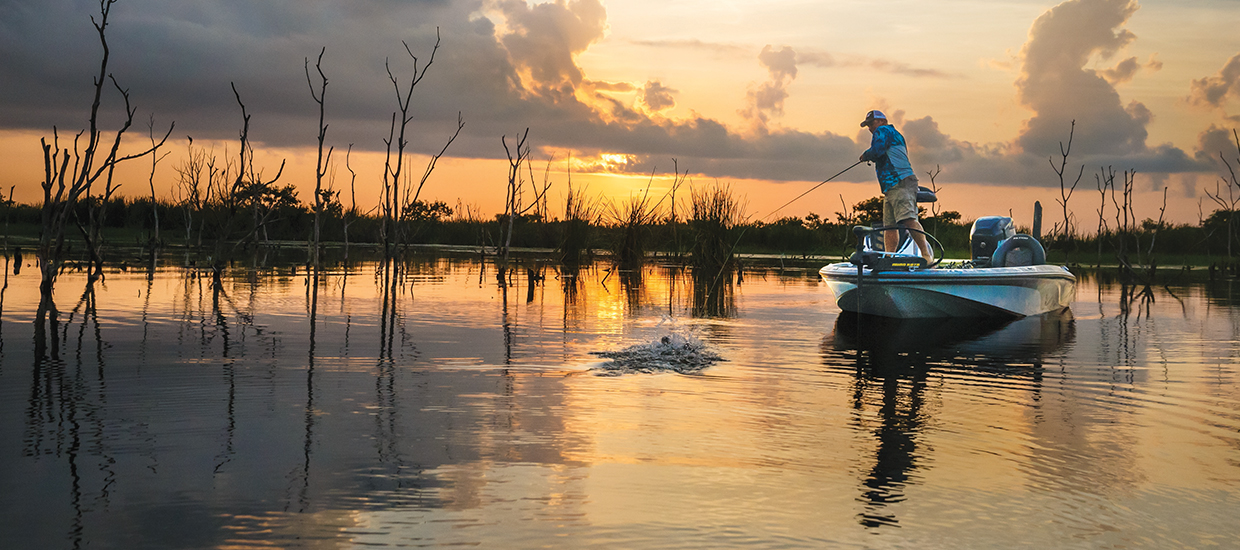Pike

Characteristics

The average length of Pike found in Canada ranges from 24 – 30 inches long and weighs 3 – 7 pounds with the potential to exceed 50 inches and 30 pounds.
They are typically olive green in colour with yellowish-white bellies. Young Pike are outfitted in yellowish stripes along the body, which morph into lightly coloured spots in adulthood. They are most responsive around mid-morning, once the sun has time to warm them up, and their attitudes shift from lethargic to aggressive.
As a general rule of thumb, lures that glide along horizontally are most attractive to Pike. They are known for their “fast-start” strikes and sudden bursts of energy, often for the purpose of feeding, opting to ambush their prey and then accelerate quickly for their strike. Many anglers fall in love with Pike due to their explosive strikes and long spirited runs when hooked. You can catch Pike using cast and retrieve fishing.
Habitat

Pike can be found in streams and shallow marshes or the backend of bays, often hiding in weedy areas to protect themselves from bigger predators. In the hotter months of July and early August, when the shallow water temperature of smaller lakes has increased
beyond a comfortable point for the Northern Pike, it’s not uncommon for anglers to have success at greater depths, even up to 30 feet, as the larger Pike will gravitate toward the colder, rockier regions.
Pike Fishing Techniques
Casting

Have your rod at roughly waist level with the reel below the tip of your rod with your bait or lure hanging about 10 – 18 inches off the tip of your rod.
You’ll want to your rod forward over your shoulder, pointing directly at your target on the surface of the water.
Depending on what sort of your rod/reel combination you’re using, you may need to hold your line or else time the pressing of your release button so it is let go as your rod comes into eyeline again, as the weight of the lure pulls your line out. Once you’re satisfied with the depth of your lure, close the bail with your free hand or begin turning the handle to engage your reel.
Trolling

This technique refers to letting out a set amount of line from the reel to get the lure down to a chosen depth and pulling it behind a boat that is traveling at a slow speed so that the lure is continuously displaying the desired action.
The idea is to cover as much water as possible while your lure moves in a swimming action, mimicking the movements of real prey. It’s a technique that is highly influenced by the gear you use, so you’ll want to make sure you have the correct equipment for best results. Slowly pull a wobbling crankbait just below the surface of the water (you should see a subtle wake forming). Make sure you wait for the tug of a bite so you don’t risk jerking the lure away too quickly and losing your catch. When trolling, it is best to use a motor that enables your boat to go slow enough to target the fish you’re after.
Slip Bobbing
The act of presenting bait at a pre-determined depth below a sliding float/bobber.
Anglers tie or thread a bobber stopper onto their line with a float between the hook and bobber stop, typically with bait. This style of bobber is easy to adjust the depth of the bait by simply sliding the stopper up or down on the line so that the bait is presented in the eyeline of the fish being targeted. All the fisherman has to do is wait for the bobber to begin being pulled beneath the surface, reel up the slack until the line is tight and set the hook!
